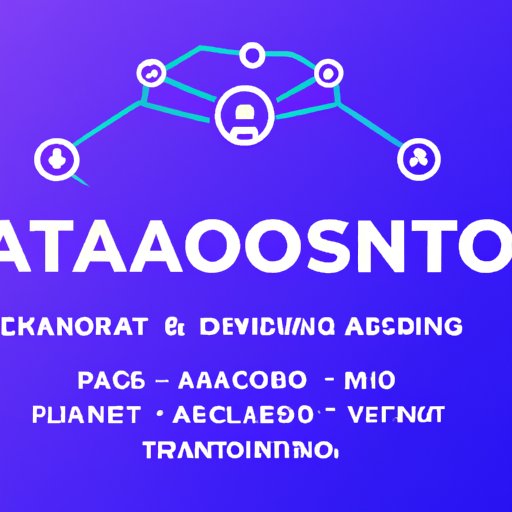Introduction
Decentralized Autonomous Organizations (DAOs) are organizations that are managed by computer programs or software. They are run by a set of rules encoded in their code and decisions are made through consensus among participants. The purpose of a DAO is to enable direct democracy and decentralized decision making, allowing members to make collective decisions without having to rely on centralized authorities or intermediaries.
The purpose of this article is to provide a step-by-step guide on how to start a DAO. We will cover topics such as researching existing DAOs, setting up governance structure, creating legal framework, developing smart contracts and launching and promoting the DAO.
Research Existing DAOs
Before starting a DAO, it is important to research existing DAOs to gain an understanding of their different types, structures, and functions. This will help inform your own DAO design.
Types of DAOs
There are two main types of DAOs – open and closed. Open DAOs are open to anyone who wants to join and participate, while closed DAOs are limited to a specific group of people.
Structure of DAOs
A DAO typically consists of three parts: a governance layer, a technical layer, and a financial layer. The governance layer is responsible for decision-making and establishing rules, while the technical layer is responsible for implementing those decisions. The financial layer is responsible for managing funds and distributing rewards.
Functions of DAOs
DAOs can be used for a variety of functions, including voting on proposals, managing funds, and distributing rewards. According to a study by the European Commission, “DAOs can serve as a platform for collective decision-making, resource allocation, and value creation” 1.
Set Up Governance Structure
Once you have researched existing DAOs, the next step is to set up a governance structure. This includes defining roles and responsibilities of members, creating voting rules, and establishing a consensus mechanism.
Roles and Responsibilities of Members
It is important to define roles and responsibilities of members so that everyone knows what is expected of them. This should include tasks such as voting on proposals, managing funds, and distributing rewards.
Voting Rules
Voting rules should be established to ensure that decisions are made fairly and transparently. This could include rules such as requiring a certain percentage of votes in order to pass a proposal or setting a minimum amount of time for members to vote.
Consensus Mechanism
A consensus mechanism should also be established in order to ensure that all members agree on decisions. Popular consensus mechanisms include proof-of-stake, delegated proof-of-stake, and proof-of-authority.
Create Legal Framework
Creating a legal framework is an important step in starting a DAO. This includes drafting terms and conditions for participants, as well as determining applicable regulations.
Terms and Conditions for Participants
Terms and conditions should be drafted to ensure that all participants understand their rights and responsibilities. This should include rules such as when rewards will be distributed, how disputes will be resolved, and how funds will be managed.
Applicable Regulations
It is also important to determine which regulations apply to your DAO. This will vary depending on your jurisdiction, but could include securities laws, anti-money laundering laws, and data privacy laws.
Develop Smart Contracts
Smart contracts are computer programs that execute predefined actions when certain conditions are met. They are essential for running a DAO, as they allow for automated decision making and self-executing transactions.
Writing Code for Smart Contracts
Writing code for smart contracts requires knowledge of programming languages such as Solidity and JavaScript. It is recommended to hire an experienced developer to write the code for your smart contracts.
Deploying Smart Contracts on Blockchain Platform
Once the code is written, the next step is to deploy the smart contracts on a blockchain platform. Popular platforms include Ethereum, EOS, and Tron.
Launch and Promote
Once the DAO is set up, the next step is to launch and promote it. Launching the DAO involves deploying the smart contracts on the blockchain platform, while promoting the DAO involves getting the word out to potential users and investors.
Launching the DAO
Launching the DAO involves deploying the smart contracts on the blockchain platform. This should be done carefully, as mistakes can be costly and time-consuming to fix.
Promoting the DAO to Potential Users and Investors
Promoting the DAO is an important step in ensuring its success. This could involve marketing campaigns, social media outreach, and events to get the word out to potential users and investors.
Conclusion
Starting a DAO can be a complex and time-consuming process, but by following the steps outlined in this article, you can set up a successful DAO. Researching existing DAOs, setting up a governance structure, creating a legal framework, developing smart contracts, and launching and promoting the DAO are all key steps in the process.
1. European Commission (2020). “Decentralised Autonomous Organisations: A Primer”. Retrieved from https://ec.europa.eu/info/sites/info/files/communication-decentralised-autonomous-organisations_en.
(Note: Is this article not meeting your expectations? Do you have knowledge or insights to share? Unlock new opportunities and expand your reach by joining our authors team. Click Registration to join us and share your expertise with our readers.)
